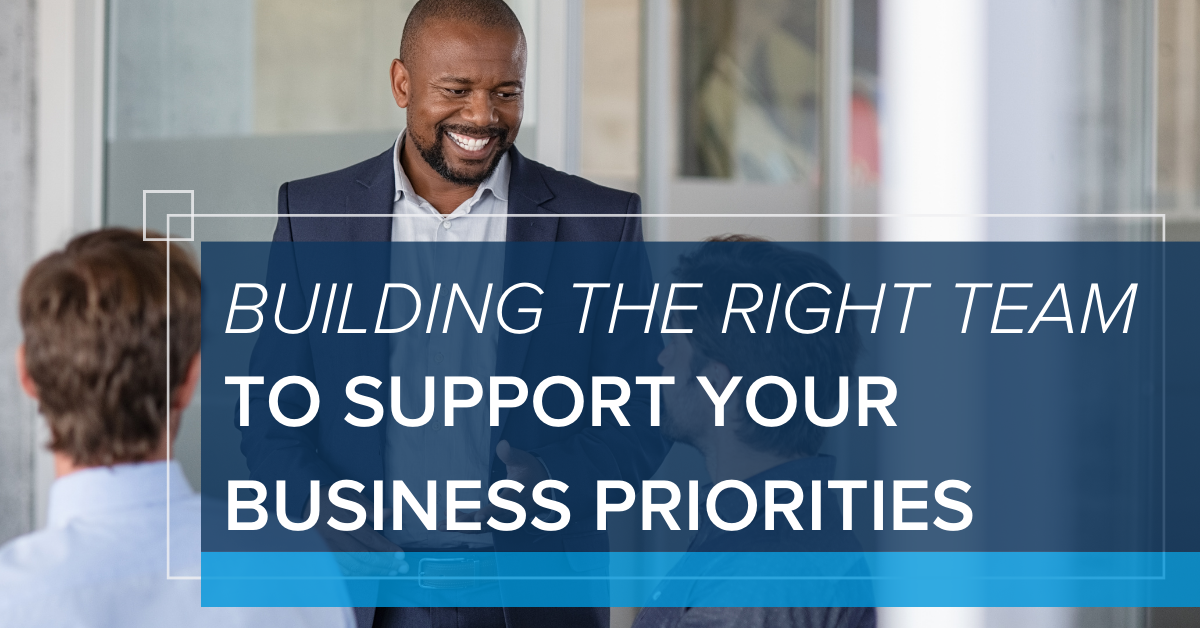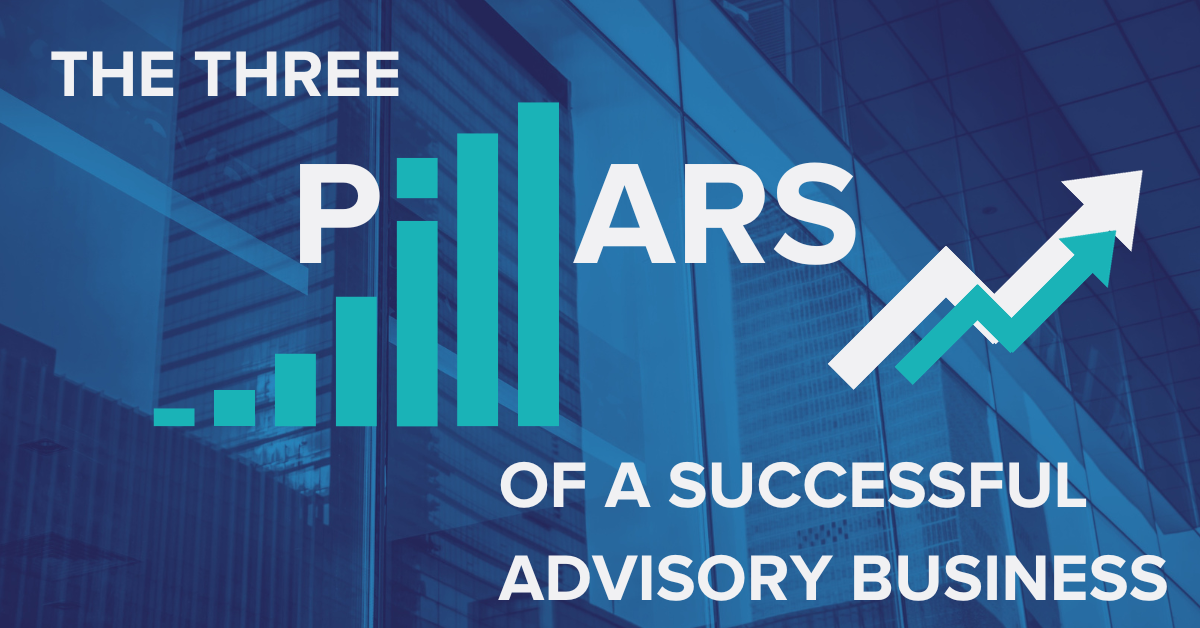One of the best things about financial advisors and wealth management professionals – you love your job. You enjoy the puzzle and the prospecting. You enjoy the paycheck. And you enjoy your clients. We know this because we know you. This is what you and your peers tell us every day on the phone, in emails, and at conferences.
This is why when it comes time to talk about an eventual exit and the “R-word” you wield so effectively with your clients, you brush off the conversation. You say, “It’s too early to talk about that, ask me again in five years.” And the next year you say the same thing, and the next, and the next, until suddenly it’s time and you just gotta work with what you’ve got.
On our side of the industry, we shake our heads and call it the “Rolling 5-Year Plan.”
The Rolling 5-Year Plan: Solving Succession Challenges
Topics: Continuity Planning, Succession Planning, Talent Recruitment, Sustainability, Sell and Stay™
Building the Right Team to Support Your Business Priorities

One of the most difficult challenges for independent advisory businesses is finding and retaining the professionals they need to service a growing client base and perpetuate sustainability. The talent pool is extremely competitive, especially in the financial services industry. The value of a strong team and integrated business is ever increasing, and the number of new advisors coming into the profession is still relatively low. To be successful in building the right team, you’ll need to be strategic in your efforts and focus on the people that best align with your business priorities and your plans for growth.
Topics: Compensation, Organizational Structure, Business Growth, Next Generation, Talent Recruitment, Sustainability, Wealth Management, Business Operations
The Three Pillars of a Successful Advisory Business

In my work in years past, I became a professional traveler. I spent a lot of time in airports, and I got to talk to many of the pilots. Airline pilots are adventurous souls who enjoy finding ways to go faster, fly higher, and see things from a level that others cannot. They are also very methodical and go about everything with a checklist mentality, a clear purpose, and as much knowledge on the subject matter as they can muster. I find a lot of our entrepreneurial advisors to be cut from the same cloth. The goal of building something bigger, stronger, and better, helping clients better understand the financial world, and then sharing what they’ve built with others is woven into the very fabric of their being. Entrepreneurs like to improve and grow, and they like to do things right.
Growth, of course, can mean many things. You might want to grow your top line revenue and assets under management. Maybe you’re looking to hire and build your team in order to improve the client experience. Perhaps you want to acquire a practice, or two, to quickly grow revenue, assets, the client base, and your own income. But, just like a pilot who wants to go faster and fly higher, eventually you’re going to need a larger plane, a stronger engine and airframe, even additional skills that maybe you don’t currently have–or don’t necessarily have a passion for developing.
Over time, we’ve seen that independent advisors don’t naturally build large, profitable, sustainable businesses. The ambition might be there, and recurring, fee-based revenue certainly helps the cause, but the skill sets that prompt most independent advisors to hang out their own shingle and start gathering clients who trust you with their financial goals and assets are different than what it takes to run an organization of professionals and create scale. For these reasons and others, this is still more an industry of book builders than it is of business builders.
Topics: Compensation, Succession Planning, Organizational Structure, Business Growth, Entity Structure, Sustainability, Building Your Team
Top 10 Drivers of Business Value
/Blog%20Header%20-%20Top%2010%20Drivers%20of%20Business%20Value%20(1).png?width=1200&height=628&name=Blog%20Header%20-%20Top%2010%20Drivers%20of%20Business%20Value%20(1).png)
The value of your practice is determined by many factors, some obvious, and some not so obvious. And the degree to which some aspects impact your value more largely depends on the reason you’re valuing the business in the first place.
Whether you’re considering acquisition, onboarding new talent–or new owners–, monitoring annual growth, or getting ready to sell, these ten factors have the most significant impact on the value of your business. Focus in these areas can make a major difference in your book’s sustainability and its eventual purchase price when transition time arrives.
Topics: Business Growth, Business Value, Buying & Selling, Sustainability, Benchmarking, Valuation & Appraisal
10 Reasons to Value and Monitor Your Practice
Experienced business owners recognize the importance of tracking and monitoring their firm's value over time. They know this business is one of their largest assets, and by measuring and monitoring it, they are enabling its growth, protecting its value, and ensuring a sustainable - and profitable - future. Understanding value and monitoring it over time is the starting point for every business plan: organic growth, acquisition, succession, talent recruitment, everything.
Topics: Continuity Planning, Succession Planning, Continuity, Sustainability
Lending for Successors: What Advisors Need to Know

If you are preparing to become the successor of an RIA firm, you may have a lot of questions and concerns about how to negotiate the best deal and what lending options are available to help you finance the succession.
To help you answer these questions, Alicia Chandler, President and Susie McEuen, Strategic Markets Vice President of Oak Street Funding sat down with FP Transitions’ Director of Valuations, Aaron Wells, and CFO, Eric Leeper, to share their insights and tips on what successors need to know.
Topics: Continuity Planning, Succession Planning, Deal Structure, Continuity, Sustainability
Continuity is Not Succession
Often used interchangeably, the terms Continuity Plan and Succession Plan refer to very different business planning elements. Continuity plays an essential role in defining what happens upon a “triggering event”– sudden absence, disability, death or otherwise, while succession refers to an intentional plan that brings multiple generations of owners into the business, typically over 10-15 years, to carry it forward for decades to come. We refer to this goal as sustainability.
Topics: Continuity Planning, Succession Planning, Continuity, Sustainability
Defining Your Enterprise: What Are You Building?
/Blog%20-%20Defining%20Your%20Enterprise%20What%20are%20you%20building%20(Refresh%20Banner)%20.png?width=1200&height=628&name=Blog%20-%20Defining%20Your%20Enterprise%20What%20are%20you%20building%20(Refresh%20Banner)%20.png)
For our clients, the courses of action may differ, but growth is the number one priority. The goal could be to grow and then sell it to a third party for maximum value. Alternatively, the aim could be to create a sustainable enterprise capable of supporting a gradual transfer of ownership, leadership, and responsibility to an internal successor.
Many advisors arrive on our doorstep using terms like “silo” and “ensemble” to describe to us what they believe they have built. However, these terms merely describe the organizational structure, which is just one facet of the strength of an independent advisory enterprise. These terms are not sufficient for diagnosing ALL structural elements needed to support a sustainable, profitable, valuable enterprise in this highly-regulated and sometimes complex industry.
Topics: Business Growth, Sustainability, Enterprise
Ideas Without Action? You’re Not Alone.
.png?width=1200&height=628&name=Procrast%20Blog%20(1).png)
Great opportunity comes often with great risk. But just as importantly, and far more prevalently, everyday challenges wear on us, too. How many times have you had the same conversation with a client about opening that 529? Or upping that 401k contribution? They want to do it – so they say – but they keep showing up for meetings without having done it.
Topics: Succession Planning, Business Value, Transition Plan, Continuity, Sustainability, Leadership, Valuation & Appraisal, KPI, marketing, valuation
Your Catalyst for Growth and Progress: Focus on Your Team
/Blog%20-%20Catalyst%20for%20Growth.png?width=1200&height=628&name=Blog%20-%20Catalyst%20for%20Growth.png)
Editor’s Note: We originally posted this article by Colleen Jordan Hallinan in 2018. Since then, the need for business owners to focus on building the right team in order to grow and establish sustainability has only increased. And so, five years later, Colleen’s guidance on nurturing your team, evolving your own role, and adjusting your mindset to cultivate a stronger, more capable group of professionals is just as relevant.
Successful, ambitious, and conscientious advisors ask questions like: How do I create next-level growth? What will it take to build a firm that delivers an extraordinary experience to my clients and their families? How am I going to achieve my own next-level life?
The answer starts with another strategic question: What has to happen to give you the freedom to focus on precisely those aspirations?
Your catalyst for growth in all three areas lies in the talents of your team. Make your A players your #1 priority and you’ll have an alchemy that expands your available time and transforms exhaustion and obstacles into more space and energy.
/A%20Players.png?width=632&height=243&name=A%20Players.png)
But it doesn’t come without a cost. The cost is personal sacrifice of current habits, beliefs, ego, and behavior, plus an investment of more time now to blend together the ingredients for that alchemy. Your results will come from your ability to:
- let go and stay focused on the big picture,
- place yourself in service to your team, and
- treat them like your best clients.
Topics: Succession Planning, Business Growth, Next Generation, Sustainability, Building Your Team
